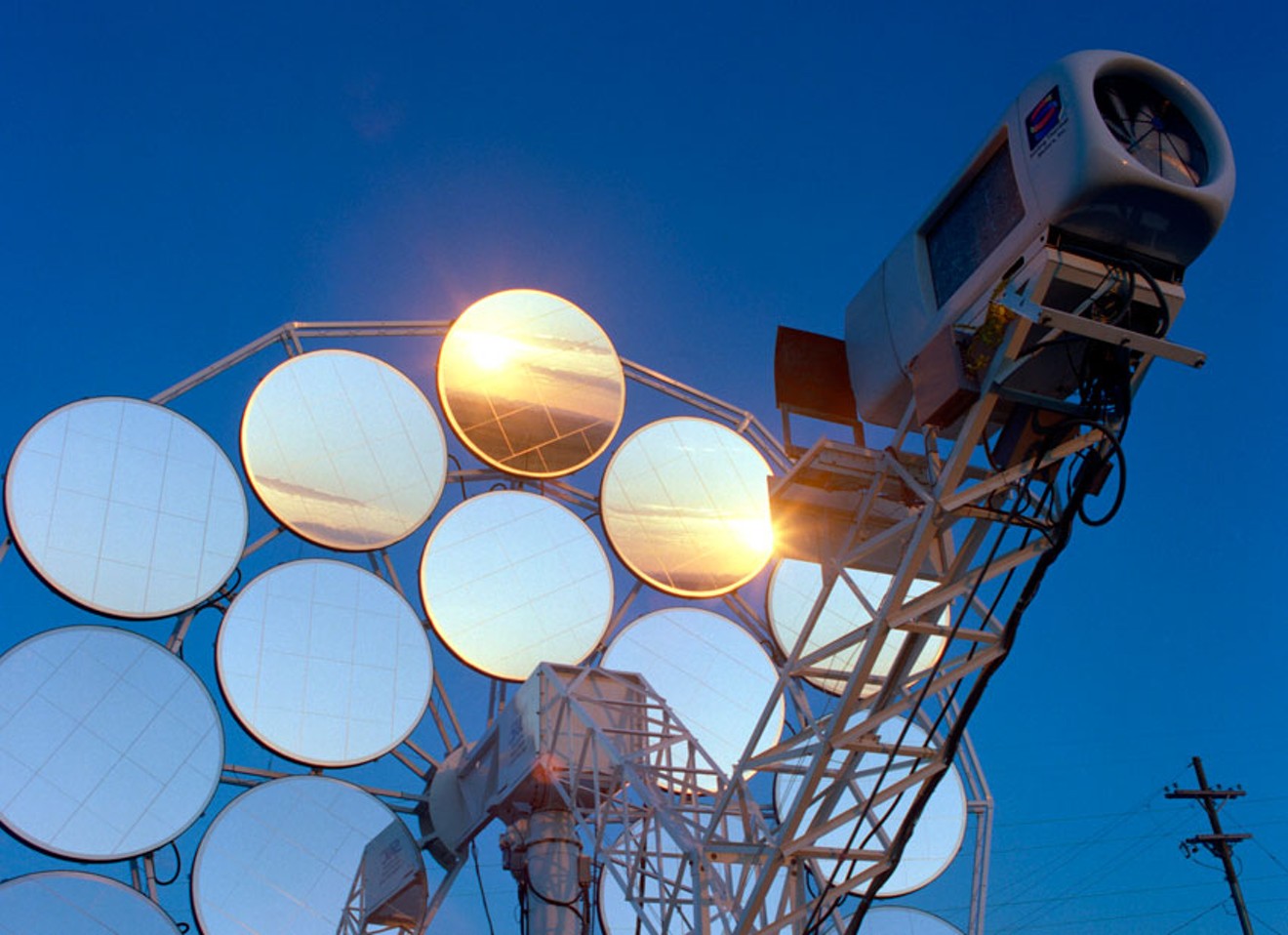Forget sci-fi movies: For a real surreal experience, look no further than Golden. Colorado’s first capital is now the capital of the green movement and home to the National Renewable Energy Laboratory, which is celebrating its fortieth anniversary in July. NREL, which started out as the Solar Energy Research Institute (Denis Hayes, founder of Earth Day, was its first director), is a government-owned, contractor-operated research-and-development facility working on cutting-edge, sustainability-minded technology, like solar panels for homes and batteries for electric vehicles.
There have been plenty of breakthroughs over the past four decades, and despite threats of funding cuts to the EPA and similar projects by the Trump administration, NREL is looking forward to many more. NREL spokeswoman Heather Lammers was kind enough to cycle through some of the lab’s greatest hits in layman’s terms. (This conversation was edited for length and clarity.)
Cellulosic ethanol: “There are numerous ways to make ethanol, that ingredient that goes into gasoline. A lot is made from sugar that comes out of the corn that you and I eat. Ethanol from cellulose is the non-food piece of the plant, so that could be the leaves or the stalks. The reason that’s important is because the pieces we like to eat of corn are very sugary, and Mother Nature makes those easy to get to. Fuel protected inside biomass material — you need to figure out how to break that down. We’ve proved that cellulosic ethanol can be produced for just over $2 a gallon. That’s competitive with other transportation fuels. There are companies looking at beginning to build plants that can produce this.”
Superefficient solar: “We basically came up with a combination of materials that could make solar cells really efficient. These are used in application in space; they powered the Mars Rovers and satellites. But if you want to bring that technology back to Earth, so to speak, a lot of the solar industry uses technology that has been developed over the years at our lab. Rooftop panels — a lot of that technology can be traced back to NREL.”
Next-gen batteries: “We’re working with automakers and battery developers on ways to improve the next generation of battery-electric vehicles. We create modeling tools that the industry uses to improve and accelerate how they design and boost production of batteries to make them smaller, last longer and have broader use.
Building energy modeling: “We do a lot with that! We have many products — I can’t even name them all — that help industries figure out how to make the most energy-efficient buildings possible. We have one of the most energy-efficient office buildings in the country; it’s net zero in its annual energy use, which means we create as much energy as we consume in a year. This building is huge — it fits 1,300 employees — and it’s built at the same cost as you could build any class-A office space in Denver.”
Drop-in biofuels: “These are the next generation of biofuels and a followup to cellulosic ethanol. Other types of biofuels use other types of biomass, etc., and they function just like crude oil or any other petroleum fuel. It’s still ramping up, and we have a couple of projects with other laboratories. We’re also leading a national consortium to look at how we can scale up different types of biofuels.”
Hydrogen fueling stations: “A number of the manufacturers of vehicles — like Toyota, for instance — are starting to launch hydrogen vehicles in parts of the country, mainly California. We have done a ton of work on the fuel cell that people use in the cars, and some of the work we’re doing on fueling stations right now is kind of cool. If you go to a gas station and you fill up your car, there’s the pump, the nozzle, the hose — things that have been in use for decades, because we all have had gasoline cars for decades. New hydro vehicles have come on the market, and there are a lot of components that haven’t been tested, so we have a mock fueling station here and a really cool robot that simulates fueling a car hundreds of thousands of times to test all components of stations and to make sure they are safe. We produce that data and give it to an industry to make sure that as they’re starting to build these new fueling stations, people can safely fuel new vehicles.”
Solar air collector: “When we were building our building, we asked a few architects for bids. One group came back and said, ‘We found this really cool invention’ [NREL’s solar air collector]. They didn’t realize we had invented it! When you think about wintertime in Colorado, metal that’s been sitting outside is still hot to the touch. So what happens with the solar air collector is, this little box of metal sits on the outside of the building, and air flowing between the metal box and the building heats up. Those little holes then draw the outside air in alongside the building, and as the air heats up, we suck that air into the building. It’s preheated air before it even gets into the building — even on a cold winter day. It can take air that’s 20 degrees and heat it up by an additional 40 degrees.”
This story is part of a series on spring cleaning, which will be rolling out all week ahead of Earth Day, Saturday, April 22. Don't miss part one, a story about Clarke the recycling robot, and part two, about Denver's disappearing dumpsters.
[
{
"name": "Air - MediumRectangle - Inline Content - Mobile Display Size",
"component": "12017618",
"insertPoint": "2",
"requiredCountToDisplay": "2"
},{
"name": "Editor Picks",
"component": "17242653",
"insertPoint": "4",
"requiredCountToDisplay": "1"
},{
"name": "Inline Links",
"component": "18838239",
"insertPoint": "8th",
"startingPoint": 8,
"requiredCountToDisplay": "7",
"maxInsertions": 25
},{
"name": "Air - MediumRectangle - Combo - Inline Content",
"component": "17261320",
"insertPoint": "8th",
"startingPoint": 8,
"requiredCountToDisplay": "7",
"maxInsertions": 25
},{
"name": "Inline Links",
"component": "18838239",
"insertPoint": "8th",
"startingPoint": 12,
"requiredCountToDisplay": "11",
"maxInsertions": 25
},{
"name": "Air - Leaderboard Tower - Combo - Inline Content",
"component": "17261321",
"insertPoint": "8th",
"startingPoint": 12,
"requiredCountToDisplay": "11",
"maxInsertions": 25
}
]












